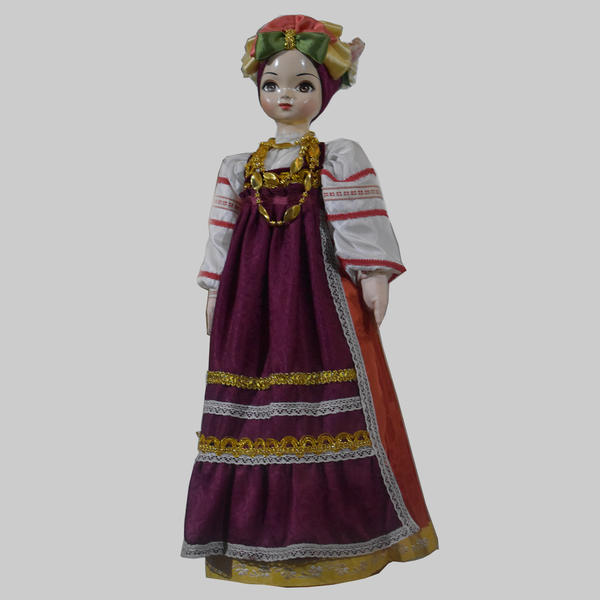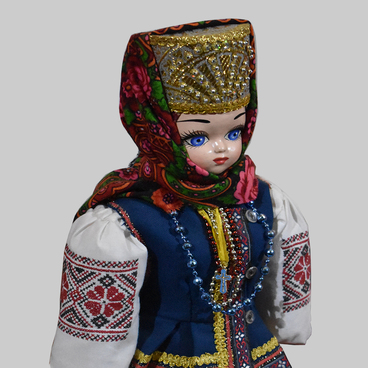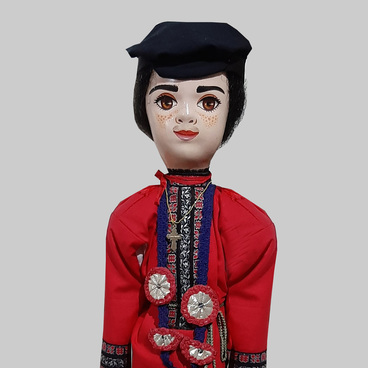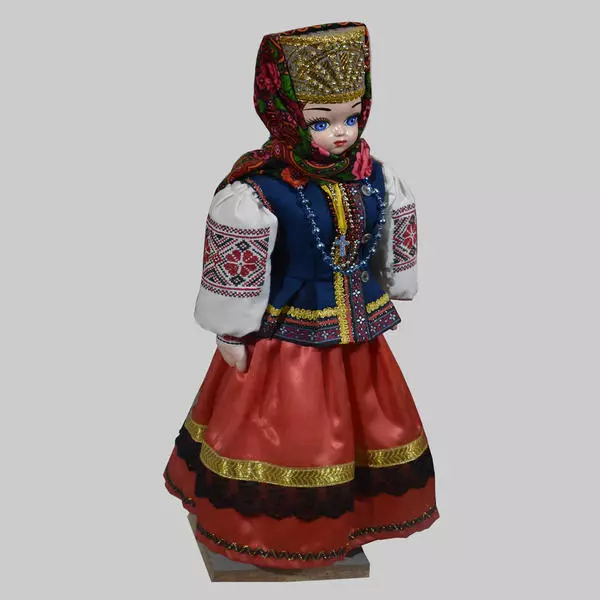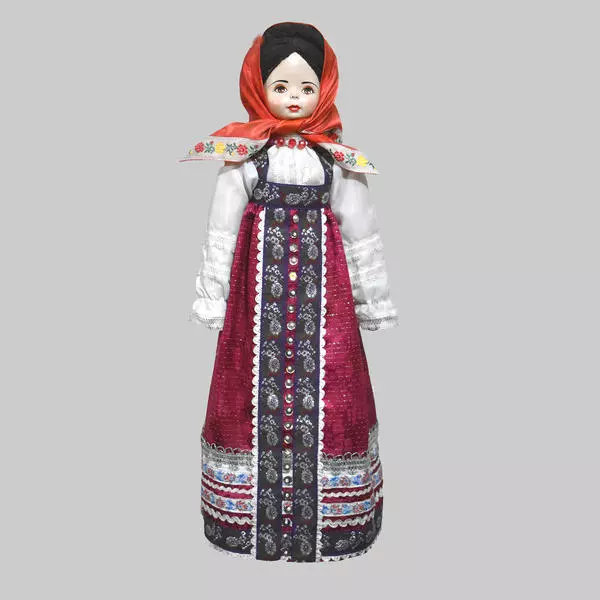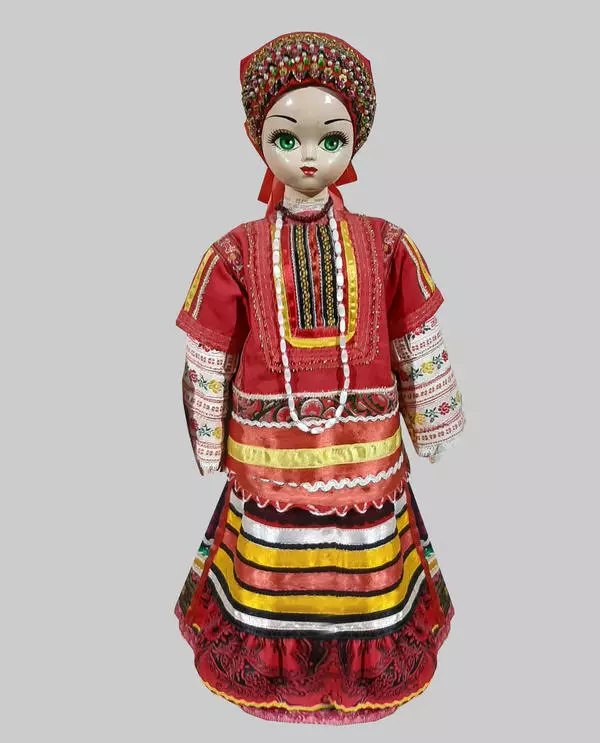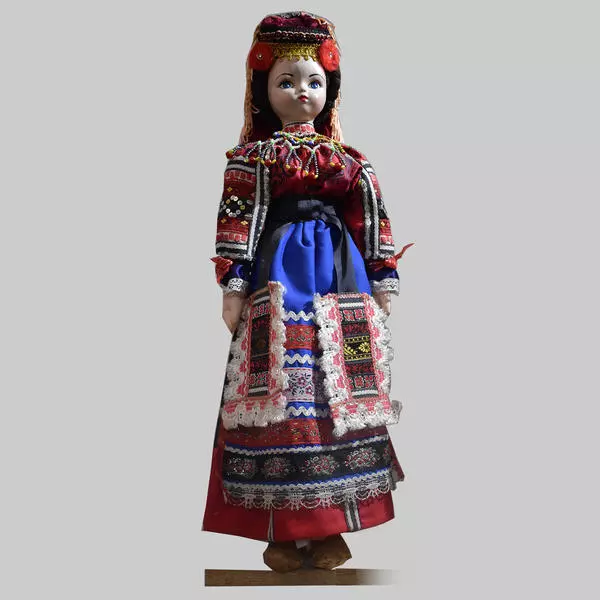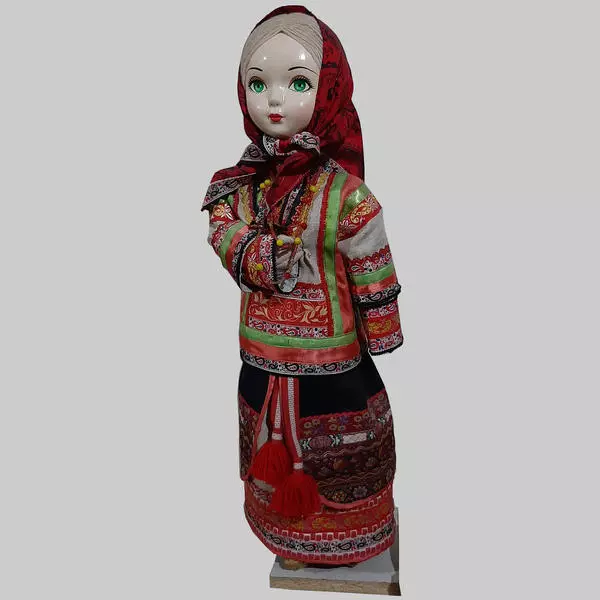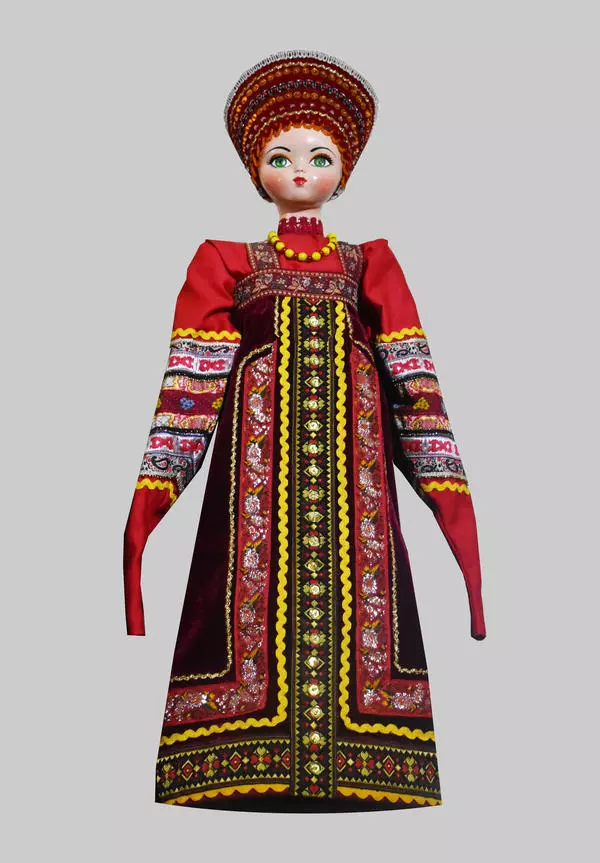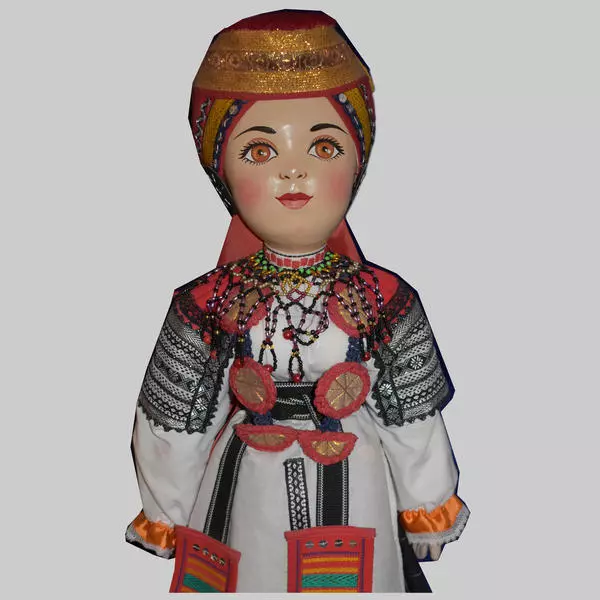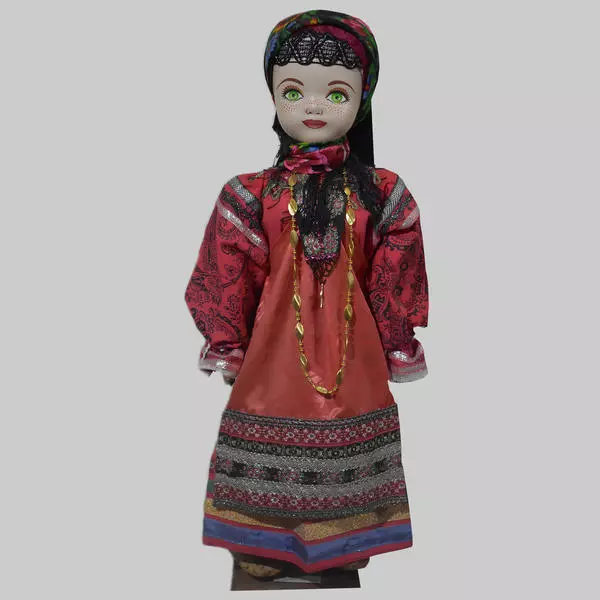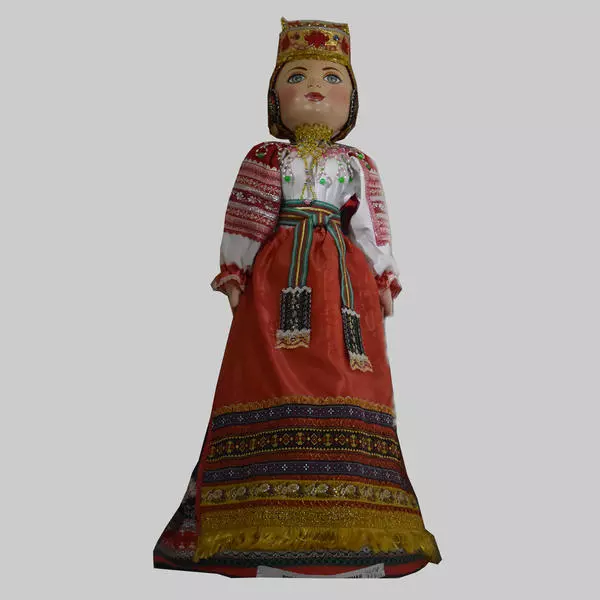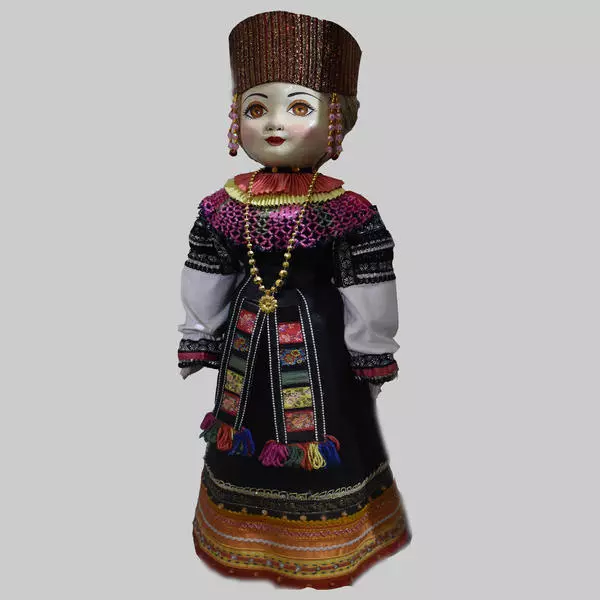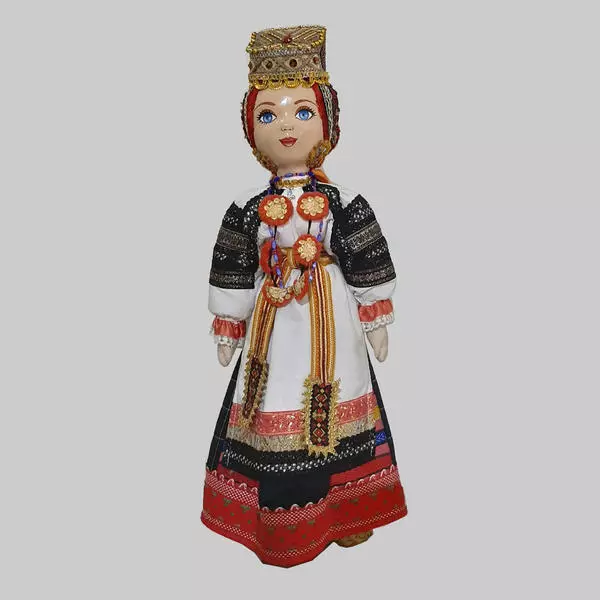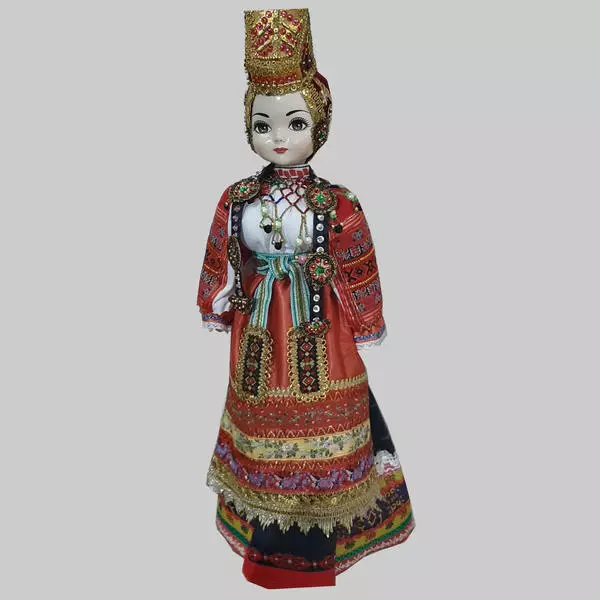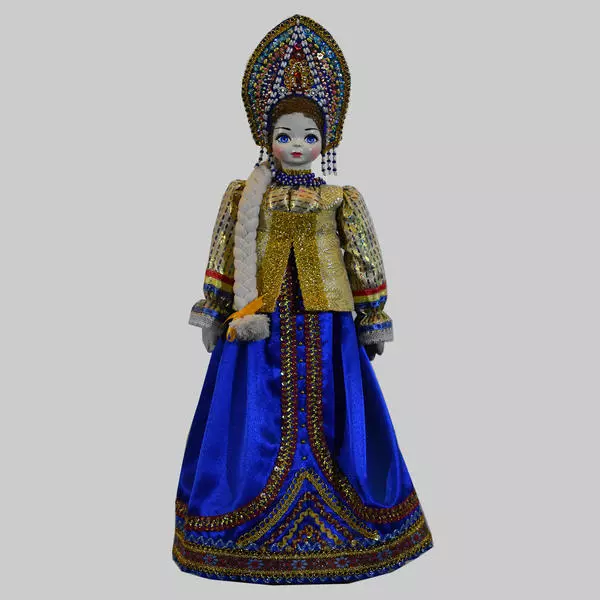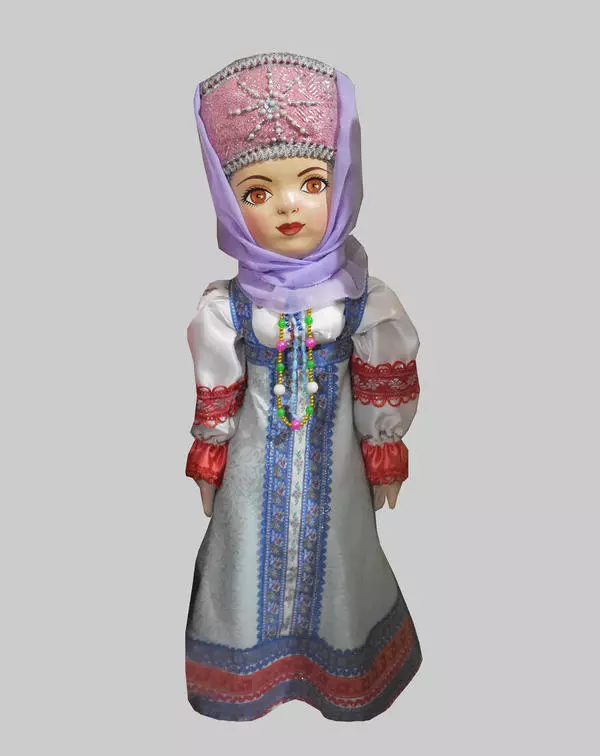The outfits of female residents of the Kursk Region combined, in an unusual way, the features of the Volga region, Ukrainian and Belarusian folk costumes. They included workers', everyday, festive and ceremonial (wedding, funeral) clothes. Festive and wedding dresses were carefully stored and passed from generation to generation.
Girls who reached marriageable age (namely, 15-16 years of age) wore sarafans (sundresses). They were worn over a long gown, the upper part of which was made of the best linen cloth. Wide sleeves, assembled from below on a cuff, and the neckline were decorated with embroidery. The lower part of the gown was made of unbleached hemp canvas. The edge of the hem was covered with colored ribbon or lace.
The sarafan was tucked at the back with the folds resembling modern pleating. To prevent the folds from deforming, a sarafan’s bottom was tied up before the garment was placed in the chest. The sarafan was girded with a beautiful wool or silk belt. An apron covered the sarafan front like a veil. For this reason, girls from poor families often made the sarafan front from coarse fabric and did not decorate it at all, as it was not visible under the apron.
The apron was decorated with embroidery, appliqués and lace. According to tradition, the mother-in-law gave her daughter-in-law a veil (an apron) before the wedding. The richer was the apron embroidery, the better welcome was in store for the bride in her husband’s house. A simple canvas apron without embroidery meant that the young woman would be treated as a servant. In response, the daughter-in-law embroidered the sleeves on her mother-in-law’s gown and the bride’s work was demonstrated at the wedding to all guests.
In Kursk Region, the girls’ thinness was perceived as a sign of illness and a potential obstacle to marriage. To make their figures more sumptuous, young slim girls wore several sarafans for the holiday. After getting married, the girl replaced the sarafan by a poneva (wrap skirt) which consisted of two or three woolen pieces. It was worn, like the sarafan, above the gown. Beads were an essential element of the outfit.
Kursk women paid keen attention to hats. On weekdays, women and girls wore kerchiefs: women tied them at the back of their heads and girls did it in the front. On festive occasions, the girls wore wreaths made of artificial flowers, richly decorated with ribbons. Instead of a wreath, they would occasionally create a complex structure of a head band and satin ribbons. Those around them could admire the top of the girl’s head and a plait in a special cover - the nakosnik (braided decoration for unmarried women).
The festive head wear of a married Kursk woman differed from that of a girl, for not a single hair should be visible from under her head dress. It was a terrible shame for a woman to show her hair to strangers (make an unfortunate slip). Newly wed women wore tall, richly colored kokoshniks (a traditional Russian head dress).
After the birth of the first baby, the kokoshnik was hidden in the chest and saved for the woman’s daughter. The woman wore a slightly less spectacular hat, but it still contained 18 elements. In winter, women wore warm shawls, fur hats and sheepskin coats. Lapty (straw shoes) were the daily footwear. Festive footwear was made of leather, cloth and felt.
Girls who reached marriageable age (namely, 15-16 years of age) wore sarafans (sundresses). They were worn over a long gown, the upper part of which was made of the best linen cloth. Wide sleeves, assembled from below on a cuff, and the neckline were decorated with embroidery. The lower part of the gown was made of unbleached hemp canvas. The edge of the hem was covered with colored ribbon or lace.
The sarafan was tucked at the back with the folds resembling modern pleating. To prevent the folds from deforming, a sarafan’s bottom was tied up before the garment was placed in the chest. The sarafan was girded with a beautiful wool or silk belt. An apron covered the sarafan front like a veil. For this reason, girls from poor families often made the sarafan front from coarse fabric and did not decorate it at all, as it was not visible under the apron.
The apron was decorated with embroidery, appliqués and lace. According to tradition, the mother-in-law gave her daughter-in-law a veil (an apron) before the wedding. The richer was the apron embroidery, the better welcome was in store for the bride in her husband’s house. A simple canvas apron without embroidery meant that the young woman would be treated as a servant. In response, the daughter-in-law embroidered the sleeves on her mother-in-law’s gown and the bride’s work was demonstrated at the wedding to all guests.
In Kursk Region, the girls’ thinness was perceived as a sign of illness and a potential obstacle to marriage. To make their figures more sumptuous, young slim girls wore several sarafans for the holiday. After getting married, the girl replaced the sarafan by a poneva (wrap skirt) which consisted of two or three woolen pieces. It was worn, like the sarafan, above the gown. Beads were an essential element of the outfit.
Kursk women paid keen attention to hats. On weekdays, women and girls wore kerchiefs: women tied them at the back of their heads and girls did it in the front. On festive occasions, the girls wore wreaths made of artificial flowers, richly decorated with ribbons. Instead of a wreath, they would occasionally create a complex structure of a head band and satin ribbons. Those around them could admire the top of the girl’s head and a plait in a special cover - the nakosnik (braided decoration for unmarried women).
The festive head wear of a married Kursk woman differed from that of a girl, for not a single hair should be visible from under her head dress. It was a terrible shame for a woman to show her hair to strangers (make an unfortunate slip). Newly wed women wore tall, richly colored kokoshniks (a traditional Russian head dress).
After the birth of the first baby, the kokoshnik was hidden in the chest and saved for the woman’s daughter. The woman wore a slightly less spectacular hat, but it still contained 18 elements. In winter, women wore warm shawls, fur hats and sheepskin coats. Lapty (straw shoes) were the daily footwear. Festive footwear was made of leather, cloth and felt.

